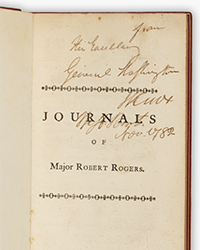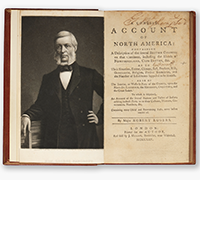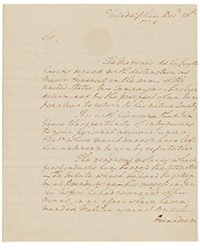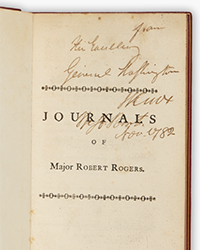History through Commerce: the confluence of money and ideas converted into Certificates of Ownership
I’ve been reading two volumes, both photographic essays, that are collector’s guide books to the collecting of historic stock certificates:
Hans Braun’s Historische Aktien Europa Vol. 1
The Art of the Market: Two Centuries of American Business as seen through its stock certificates
I came across these volumes during a discussion with Christopher LaBarre of George H. LaBarre Galleries and found them to be a rewarding read. Between them, they provide hundreds of examples of stock certificates that capture the pace and approach of industrial development both in early Europe and the United States. Histories are the poetry of events while corporate records reflect the intersection of money, sweat, blood and everyday reality.
Collecting the printed word has been an honored pursuit that has long relied on bibliographies and auction catalogues to understand scale and range, frequency of appearance and value. But these days the variety and complexity of many, previously somewhat obscure collectible forms of collectible paper, are now increasingly the subjects of associations, auctions and websites. For the category of stock certificates these books are useful to understand how this form fits.
I have long appreciated that manuscripts, documents and artifacts relating to business and commerce in the transforming decades between the French and Indian [1754-1763] to the First World War [1915-1918] – roughly 160 years, have provided a clear sense of reality. Wars were invariably written about while the precariousness of life tended to be told in the business ledgers and legal documents of families and businesses. Over those decades local economies were created from grants and patents into networks of subsistence farms that became the basic local economic unit, organizing themselves in time into counties, towns and villages where crops, goods and services were shared. These homestead patroons seeing the benefits of being organized, being both self-reliant and ambitious, over the ensuing decades relentlessly sought more opportunities to improve the quality of their lives.
For them politics was a distant idea, the difference whether they lived under a king or an American governor was almost an abstraction. For them the great unseen power was the rising economy that almost routinely presented the possibility of miracles. If they could increase their farm yields and could move that excess to far away places they could earn the money of people who wanted to live in cities. Based on that simple calculus the independent family farm was integrated into the regional economy.
For that to happen communities emerged as the important economic unit to organize their area’s basic needs; to own and build roads and bridges, provide policing, courts and common defense. From that local taxation developed and with taxes came economic power.
These communities were an amalgam of pirate and patroon and both saw the potential for their communities to be interwoven into the developing regional economy. The issues were complex; who and how they would benefit and how would they pay for what would be significant risk taking. The answer was the miracle of stocks and bonds that initially seemed to be as certain as the words printed in the Bibles they kept by their beds. Beginning in the early 19th century many families committed to stockholding ventures to lure canals and railroads their way.
The analysis of those shifting currents that brought economic development to places big and small is endlessly interesting and complex at the intersection of opportunity and advantage.
One form of these economic developments were expressed in the history of how the corporation’s legal advantages were leveraged, shareholders organizing themselves into entities gaining permissions and rights to building and operating canals and railroads and creating banks and later municipal services. Capital always seemed hard to come by and the creation of companies and selling shares made it possible to pool capital and share risks. Invariably, involved in the ocean of possibilities, there were investors, opportunities and pigeons and many a hard story were learned through the succession of high minded ideas that too often crashed on the altar of economic reality. Infrequent successes notwithstanding, wanted objectives stacked on hopeful assumptions, financed hare-brained ideas that are fun to contemplate that made the development of needed services possible but often ultimately doomed to failure. Such is the price to be paid for progress, too often paid for dearly.
Bare knuckled 19th century capitalism, when ascendant, flickered between exhilaration and despair, later leaving some of the bridges we use today as well as vestiges of canals and railroads long abandoned. And something else survived; while their bankrupted businesses disappeared, their share certificates in some few cases live on as florid history of beautiful printed documents, many signed, some by the famous, many of them bonds with most of their payment stubs never redeemed because many, may I say, most companies formed on high hopes, rarely survived to their 5th or 7th birthdays. Oh well. Life could be tough. Stated another way, not much has changed.
Today the formation of companies in most countries is highly regulated but in the 19th century many were the reasons and ways they failed. Dishonesty and disagreements were as common as dandelions but no matter, there always seemed to be enthusiasm for the next new idea. No matter how many clouds and showers, the economy could and would recover. This is how progress was achieved.
While my personal interest is the Hudson Valley of New York State, the explosion of commercial development across America was experienced via boom and bust cycles from sea to shining sea and everywhere in between. Early America had the complete experience as is portrayed in the Art of the Market, while their European neighbors who virtually invented the game fifty years earlier, you can use Hans Braun’s Historische Aktien Europa, given their industrial revolution was in long pants before America’s was in diapers, you can use the volume of European certificates to appreciate we were small timers by comparison.
Needless to say, I like the category.
Auction houses participating in the sale of stock certificates:
Holabird western Americana Collections LLC
https://www.holabirdamericana.com/
Archives International
https://archivesinternational.com/
Spink UK
Heritage Auctions
https://currency.ha.com/us-currency/
Dealers that make markets in this form of printed history:
M. Veissid & Co.
George H. LaBarre Galleries
https://www.glabarre.com/?incl=1
Associations that provide an umbrella for the collector in this category:
International Bond & Share Society
The two books I’ve relied on were provided by the George H. Labarre Galleries and they may have copies. Their prices for them are competitive with Amazon.
The Art of the Market
By Bob Tamarkin and Les Krantz









![<b>Sotheby’s, Jan. 27:</b> [World War II]. An archive of maps and files documenting the allied campaign in Europe, from the early stages of planning for D-Day and Operation Overlord, to Germany’s surrender. $200,000 to $300,000. <b>Sotheby’s, Jan. 27:</b> [World War II]. An archive of maps and files documenting the allied campaign in Europe, from the early stages of planning for D-Day and Operation Overlord, to Germany’s surrender. $200,000 to $300,000.](https://ae-files.s3.amazonaws.com/AdvertisementPhotos/9d2762bc-9f26-47ef-96de-1c28070e19f6.png)